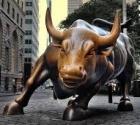In his book, “Hidden Champions of the 21st Century”, the business consultant Hermann Simon discusses the idea that small to mid-sized firms, which operate in niche markets and are market leaders in their industries, tend to become very successful. In this article, we will use his findings to identify the top ranking Hidden Champions in the market, analyse how they have performed, and randomly select a few Hidden Champions for particular focus.
What makes these companies “Hidden”?
A key element of “hidden” companies is that the range of products they make often go unnoticed by consumers, as they often form part of the supply chain. It may be that the company supplies the equipment, components, or systems that contribute towards the end product, reducing their own “distinctiveness”.
These types of companies include some of the following: Jungbunzlauer, the Austrian-Swiss company that provides the citric acid for every Coca-Cola produced and sold in the world, Mumbai based Essel Propack, one of the global market leaders for laminated tubes for toothpastes and other similar products, and Switzerland’s Lantal, a global leader in customised cabin interiors for passenger aircraft, whose customers include the likes of Boeing and Airbus.
Additionally, there is a desire for these Hidden Champions to remain hidden and maintain a low profile, so that they may continue to focus on what counts - their business. The book credits Jim Collins for making a telling distinction between “show horses” and “plough horses”. He explained that “The plough horses do not put much time or effort into grooming their public image, so they save time and energy to concentrate on their true purpose: conducting good business”.
However, a trend has started to take swing, which shows that more and more Hidden Champions are beginning to unveil themselves. At the time of writing, in 2009, Hermann Simon had found that the number of hidden champions listed on the stock exchange had risen sixfold in the last decade.
Finding the Hidden Champions
The initial step in modelling Hermann Simon’s strategy is to filter for the top 20% of stocks in the market with the strongest blend of Quality, Value and Momentum. That was done by using Stockopedia’s StockRanks.
In his book, he specified that the companies he was looking for must also generate revenues below $4 billion, drawing focus on only smaller to mid-sized companies.
He also found that the highest proportion of…












